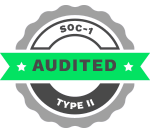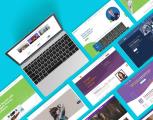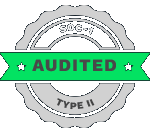Table of Contents:
Introduction
Managing a hybrid workforce will be a determining factor in the success of your company.
A hybrid workforce, quite simply, is a type of workforce that encompasses both remote employees and employees that work at an office. It can also entail flexible hours or working remotely a few days a week and working at the office the rest of the time.
It takes the best of both worlds from the work from home model and the traditional 9 to 5.
70% of workers, according to Microsoft, expect remote work options to exist after the pandemic ends. 61% prefer being fully remote. Additionally, almost a third of employees say they would quit their jobs if they were not allowed to work remotely anymore.
Even two years ago, we were not nearly as close to accepting remote work as this. The change brings many benefits – and also challenges. A year of white-collar employees working from home has not been enough experience to prepare for the future of work.
In this article, we’ll show you how to build a strong hybrid team so your business – and employees – can make your business a smashing success.
Why Allow Work From Home At All?
-
Draws the best talent from all over the world
-
Higher profits
-
Cost savings
-
Positive environmental impact
-
Less stress over commute
-
70% of workers, according to Microsoft, expect remote work options to exist after the pandemic ends. 61% prefer being fully remote. Additionally, almost a third of employees say they would quit their jobs if they were not allowed to work remotely anymore.
Challenges of Remote Work
-
Many business leaders are out of touch with their remote employees. This is in part due to the lack of physical proximity.
61% of leaders assert that they are currently “thriving”. This is far higher than those who do not have the authority to make decisions. Leaders also report earning higher incomes and taking more of their vacation days.
Employees feel this lack of connection. 37% of the workforce state that their employers are asking too much of them.
When employees work from home, there are fewer opportunities for leaders to ask them how they are doing. Furthermore, leaders lack the visual reminders to do the same.
Finding new ways to support and empower employees is one of the biggest challenges of work from home culture.
-
High productivity is only one side of the coin. The other one is a drained workforce.
One-fifth of survey respondents say that their employers do not care for their work-life balance. 54% feel overworked. A whopping 39% are exhausted.
This intensity of the average workday has significantly increased due to the hybrid work environment. Health and wellness cannot be separated from work. This was the case before, but it has come into sharp relief during the pandemic.
-
Working from different time zones can be tricky. This can throw your teams out of sync. You also might have an employee sleeping while you need them.
There can be other factors such as loneliness, un-plugging after work, and finding reliable Wi-Fi.
How to Manage a Hybrid Workforce
- Outline and establish a hybrid remote work model
Step number one is to create a set of guidelines for work that is done from home and work that is done at the office. In short, what is your hybrid workplace going to look like?
-
Which meetings can remain in-person? You might decide: strategy meetings. Which meetings can stay virtual? You might decide: daily stand ups.
-
How many days should employees spend in the office versus working at home? Will this change from employee to employee?
-
- Get the right tools
Businesses require more robust tools that will help them with managing a hybrid workforce.
You can, for example, get employee tracking apps, corporate intranet portals, leaves and attendance management tools, and timesheet and invoice management tools.
- Ensure coordination between and among teams
There is a general perception that remote work has negative effects on team dynamics. Certainly it is harder to establish relationships with people we do not meet on a near daily basis. It can be equally as hard to feel like you are part of a community.
While setting up your remote work guidelines, make sure your teams spend sufficient time with each other. Here are some ways to do this:
-
Rotate office times for whole departments or teams instead of just individual workers
-
Virtual meetings should, if possible, be kept to a minimum on days that departments or teams are working remotely, so that they can focus on their tasks. Important meetings can be had at the office.
-
Keep everyone in the loop, especially your employees who work from home full-time. This not only helps everyone stay informed and up to date, but feeling more connected.
-
- Social capital is key
Team members who have strong ties between them are seven times more likely to be engaged with their work. Such “social capital” improves not just productivity, but innovation and collaboration.
CEO and author Margaret Heffernan states that social capital is what separates regular teams from truly high-performing ones.
Social capital includes employees networking with colleagues or clients, small talk, or even working together to address a challenge. Unfortunately, social capital has reduced due to remote work. Hence, it is easy for employees – especially new or younger ones – to feel disconnected from their company culture.
There are ways to help fix this:
-
Do not rush meetings. Instead, take time to check in with how employees are feeling and if they are facing any work issues.
-
Encourage and organize activities that being employees together, such as a regular Friday afternoon chatting session or a once a month football game.
CEO and author Margaret Heffernan states that social capital is what separates regular teams from truly high-performing ones. -
- Psychological safety is a must
Psychological safety at work is the belief that you can speak up or assert your opinion without risking punishment or humiliation. It is a vital factor in building up productive teams.
Previously, this has been spoken about with regard to work. However, with remote work, it needs to extend to employees home lives as well, including their values and identities. Scheduling, coordination, and staffing decisions should take into account employees’ lives outside of work.
-
New management practices
The change from the traditional 9 to 5 will also bring with changes in managing employees. Here’s how you can help organize your hybrid workforce:
-
Build in breaks. People working remotely may not remember to get up from their desk or stop working.
-
Establish ‘do not disturb’ times for leaders, employees or both.
-
Instruct your employees to shut down their work devices at the end of the day. This would work similarly to people physically leaving the office.
-
In addition to annual goals, there should be quarterly check-ins and milestones.
-
Conclusion
Remote work isn’t like mullets – it’s not a trend. It is a fundamental shift in the way we work. From now on, the companies that win will be the companies that are successful at managing a hybrid workforce.
We hope this article has been enlightening for you! If you want to know what we can do for your business, contact us now.












 How Much Does App Development Cost? A Budget Estimation Guide
How Much Does App Development Cost? A Budget Estimation Guide  Using Angular to Develop Mobile Apps Can Be a Game Changer for Your Business
Using Angular to Develop Mobile Apps Can Be a Game Changer for Your Business  Pros and Cons of the WooCommerce Plugin for Online Merchants
Pros and Cons of the WooCommerce Plugin for Online Merchants  Mean Stack vs LAMP Stack: Which One is Better for Your Business?
Mean Stack vs LAMP Stack: Which One is Better for Your Business? 
